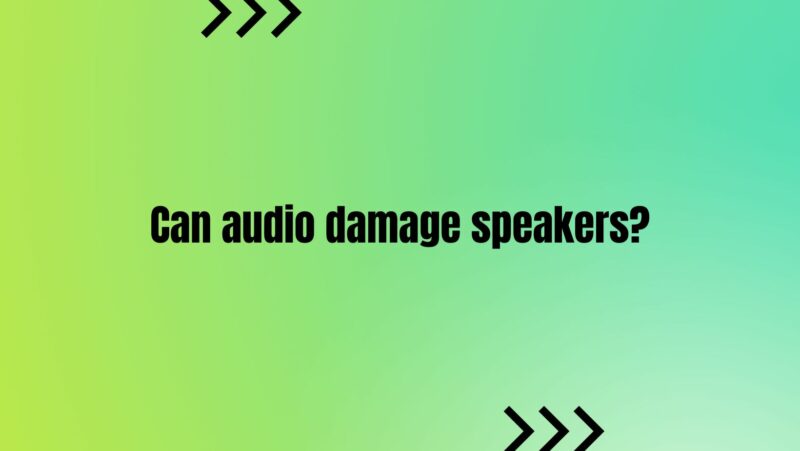Audio and speakers share an inseparable relationship, with speakers being the bridge that translates auditory signals into the vibrant symphony of sound we experience. However, the interaction between audio and speakers goes beyond mere transmission; it extends to the potential impact that audio quality and characteristics can have on the health and longevity of speakers. This article delves into the intricate dynamics between audio and speaker health, exploring how different aspects of audio, including volume levels, frequency content, and signal quality, can influence speaker performance, potential risks, and the measures to safeguard these critical components of the auditory experience.
Understanding the Interplay: Audio and Speaker Interaction
Audio, encompassing a vast array of sonic content from music and dialogue to environmental sounds, interacts with speakers in multifaceted ways:
- Volume Levels: The amplitude of audio signals determines how much power is sent to speakers, influencing the diaphragm’s movements and the energy absorbed by the speaker components.
- Frequency Content: Different audio signals cover a range of frequencies, from low bass notes to high-pitched trebles, challenging various parts of the speaker’s frequency response range.
- Signal Quality: Audio quality, influenced by recording techniques, file formats, and compression algorithms, determines the accuracy of the sound signal that speakers reproduce.
Effects of Audio on Speaker Health
The characteristics of audio have a direct bearing on the health of speakers:
- Overdriving and Distortion: High-amplitude audio signals, when overdriven or improperly amplified, can cause distortion, which may damage the delicate components of speakers.
- Frequency-Induced Stress: Reproducing extreme frequencies—either too low or too high—can strain speaker diaphragms and voice coils, affecting their long-term health.
- Thermal Stress: High volumes or prolonged exposure to demanding audio content can lead to heat generation within speaker components, potentially compromising their integrity.
Risks and Vulnerabilities
While speakers are designed to handle a range of audio signals, there are risks associated with certain scenarios:
- Excessive Volume: Playing audio at overly loud volumes, particularly over an extended period, increases the risk of overloading and overheating speaker components.
- Inadequate Amplification: Using underpowered amplifiers might lead to clipping and distortion, jeopardizing both audio quality and speaker health.
- Unbalanced Equalization: Poorly equalized audio that emphasizes specific frequencies can force speakers to work harder, heightening the risk of component strain.
The Art of Prevention: Safeguarding Speaker Health
Ensuring the longevity of speakers involves adopting responsible practices:
- Volume Moderation: Adhering to recommended volume levels and allowing speakers to “breathe” between intensive listening sessions reduces the risk of component fatigue.
- Amplification Matching: Select amplifiers that match the power requirements of speakers, promoting clean amplification without stressing components.
- Equalization Expertise: Employ proper equalization techniques to maintain a balanced frequency response, minimizing undue stress on specific parts of the speaker.
- Quality Audio Sources: Prioritize high-quality audio sources with minimal compression and signal degradation, allowing speakers to reproduce sound accurately.
Maintaining Speaker Health Through Careful Maintenance
Consistent care is vital for speaker longevity:
- Ventilation and Cooling: Ensure speakers have adequate ventilation to prevent heat buildup, and avoid placing them in confined spaces that inhibit airflow.
- Regular Inspection: Routinely examine speaker components for visible signs of damage or wear, addressing issues promptly to prevent further complications.
- Proper Handling: Handle speakers with care during installation and movement, avoiding unnecessary shocks or vibrations that could impact their health.
Conclusion
The collaboration between audio and speakers is a symphony of precision and delicacy. Audio is the blueprint, guiding speakers to create the auditory experience we cherish. However, this partnership requires balance and responsibility. Ensuring that audio is of high quality and that speakers are properly matched and maintained is essential to preserving not only the immediate listening experience but also the long-term health of these critical components. As technology evolves and our appreciation for high-fidelity sound deepens, the harmony between audio and speakers will continue to be a cornerstone of our auditory journey.


